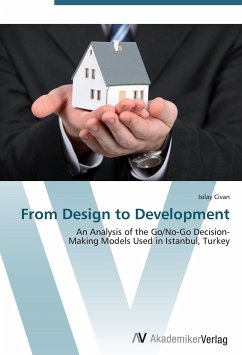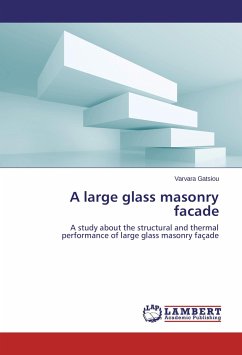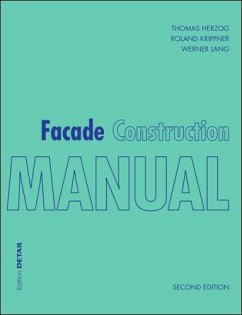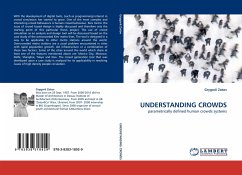
UNDERSTANDING FACADE BETWEEN DESIGN AND MANUFACTURING
A CASE STUDY ON HIGH-RISE OFFICE BUILDINGS IN ISTANBUL
Versandkostenfrei!
Versandfertig in 6-10 Tagen
39,99 €
inkl. MwSt.

PAYBACK Punkte
20 °P sammeln!
The formation methods of the architecturaldesigns-especially facades-have been changed by thenew materials and the technologies in constructionsince the Industrial revolution. The physicalautonomy of the exterior skin' had been intensifiedby glass and metal. Besides the technologicaldevelopments, facade has gained autonomy by the ideaof representing the imagery or advertisement of thearchitectural design. Although the autonomy offacades has affected our entire physicalenvironment,very little academic literature exists onthis issue. This book, therefore, aims to examine howthe formation of faç...
The formation methods of the architectural
designs-especially facades-have been changed by the
new materials and the technologies in construction
since the Industrial revolution. The physical
autonomy of the exterior skin' had been intensified
by glass and metal. Besides the technological
developments, facade has gained autonomy by the idea
of representing the imagery or advertisement of the
architectural design. Although the autonomy of
facades has affected our entire physical
environment,very little academic literature exists on
this issue. This book, therefore, aims to examine how
the formation of façades is separated from the
architectural design by new technological
developments and design intentions. This aim is
accomplished by examining the façade formation of the
high-rise office buildings in Levent-Maslak area in stanbul and examining the working principles and
marketing attitudes of façade manufacturing firms.
The analysis should help shed some light on the
design process of facades,and should be useful to
professionals in Architecture and Manufacturing
fields of architectural elements or anyone else who
are closely interested in the changes in our physical
environment.
designs-especially facades-have been changed by the
new materials and the technologies in construction
since the Industrial revolution. The physical
autonomy of the exterior skin' had been intensified
by glass and metal. Besides the technological
developments, facade has gained autonomy by the idea
of representing the imagery or advertisement of the
architectural design. Although the autonomy of
facades has affected our entire physical
environment,very little academic literature exists on
this issue. This book, therefore, aims to examine how
the formation of façades is separated from the
architectural design by new technological
developments and design intentions. This aim is
accomplished by examining the façade formation of the
high-rise office buildings in Levent-Maslak area in stanbul and examining the working principles and
marketing attitudes of façade manufacturing firms.
The analysis should help shed some light on the
design process of facades,and should be useful to
professionals in Architecture and Manufacturing
fields of architectural elements or anyone else who
are closely interested in the changes in our physical
environment.












